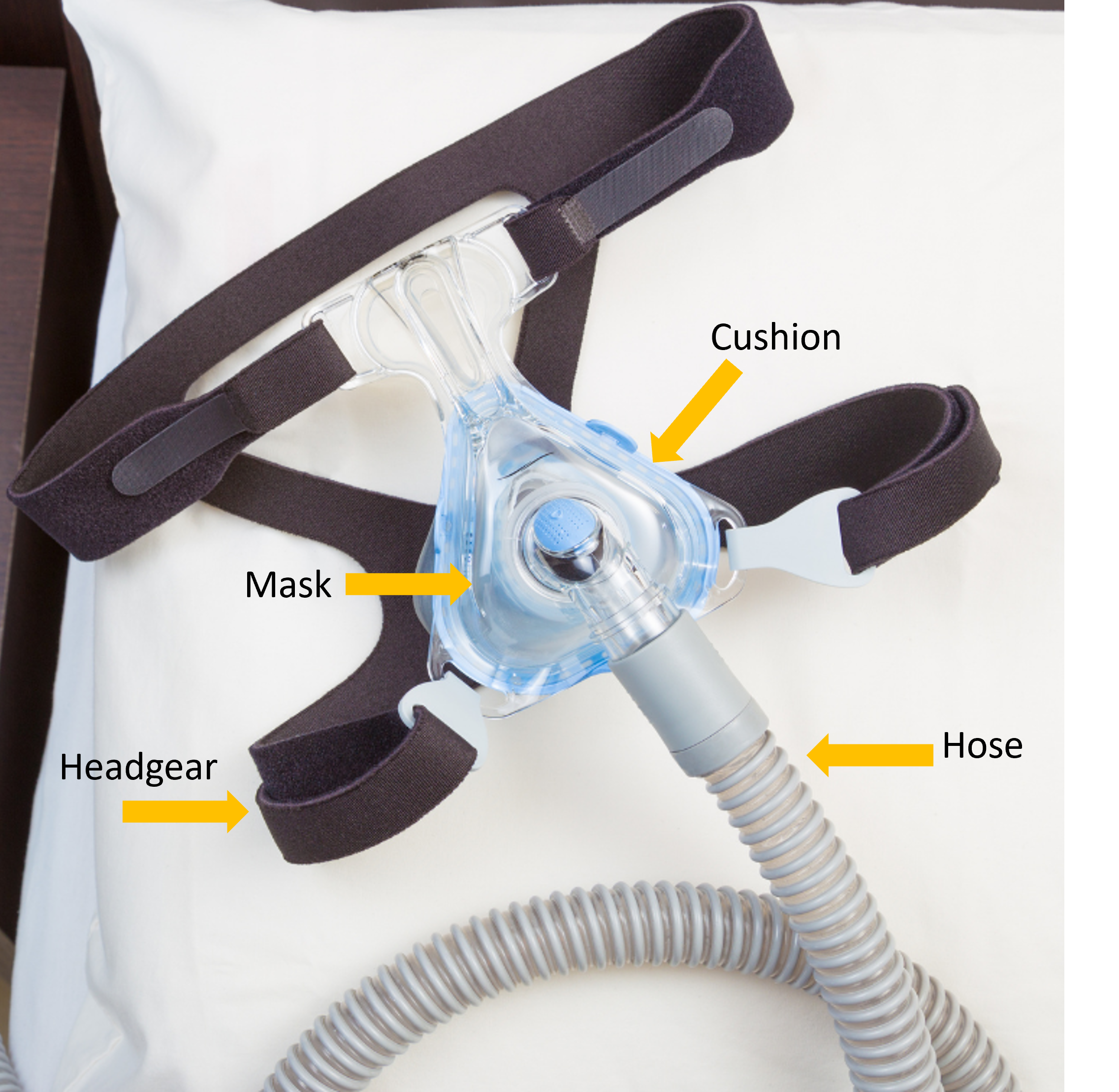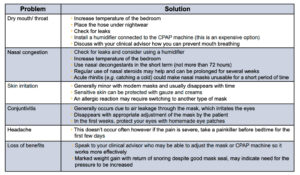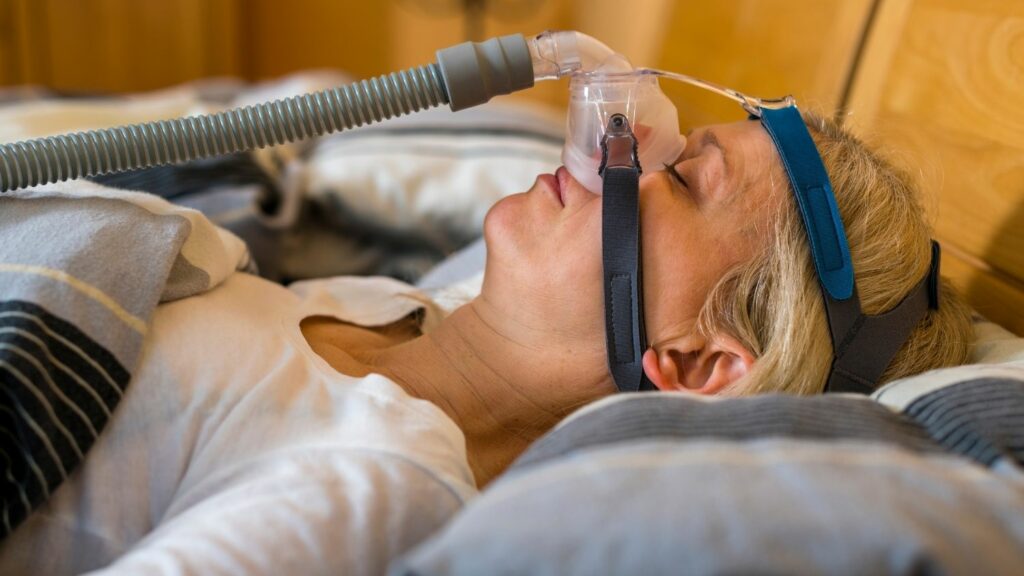Continuous positive airway pressure (CPAP)
Continuous positive airway pressure (CPAP) is the gold standard treatment for moderate-to-severe obstructive sleep apnoea. This factsheet demonstrates how to safely use CPAP at home and get the most out of the treatment.
How does CPAP work?
CPAP machines work by generating an air stream that keeps the upper airway open during sleep. There are lots of different machines available and modern devices are small, comfortable and easy to use. The air stream is pushed through tubing via a mask to the back of the throat. Choice of machine and level of air pressure will be determined by a sleep specialist after you have undergone an overnight study, usually at a sleep centre. The levels are then adjusted or ‘titrated’ after you have had an opportunity to get used to the machine at home.
Alternatives to fixed CPAP
Generally speaking, most CPAP devices are set at a fixed pressure. This pressure is the one that will control at least 95% of all events during the night. However, you may find it uncomfortable to breathe out against a fixed pressure or find it difficult to tolerate. Some devices provide variable pressure and adjust automatically to the different patterns of breathing throughout the night. Very occasionally bi-level positive pressure ventilation, using a different type of machine, is used to deliver different pressures for breathing in and out.
Face mask options
You may need time to adjust to using your mask. There is a range of different styles and designs available and most people are able to find a mask that fits well and is comfortable. The different styles of mask are:
- Nasal masks – these are the most common type of mask. They sit over the nose and are held in place by a strap around the head. However, they are not very useful if you cannot breathe through your nose particularly well.
- Full face masks – these are useful for people who only breathe through their mouth or whose breathing regularly alternates between their nose and their mouth.
- Nasal cushions and nasal pillows – these masks are inserted into the nostrils. They offer a useful alternative to the different type of masks, especially for people who feel claustrophobic with a face mask or who cannot find a mask that suits them.
Apart from these three main varieties there are also a broad variety of masks that are not very often used, such as a mask which includes insertion of a mouthpiece or a free mouthpiece with nasal pillows.
Hints and tips: Equipment Care
- Wash the cushion of the mask with mild detergent every day
- Wash the rest of the mask at least every other day
- Wash the hose every fortnight
- Check the filters every fortnight and change as required
- Your headgear may need replacing when the straps become loose or you have difficulty maintaining a good seal when you move
- The mask cushion may need replacing when loss of benefits are experienced with no other problems, or when you have difficulty obtaining a good seal.
- Make sure you have your machine checked regularly by an expert from the company that makes the device.

Troubleshooting for CPAP therapy
There are a number of problems that can occur, usually during the first weeks of treatment with CPAP. They are mostly mild and it is normally possible to overcome all of them. Below is a summary of these problems and advice on how they can be controlled. Any major problems should be immediately reported to your doctor or nurse who will be able to deal with them in conjunction with a specialist at a Sleep Department.

Remember:
- Please inform medical professionals and dentists that you have a sleep disorder and need CPAP
- Do not drive if you are feeling drowsy
- Avoid excessive alcohol and sedative medication
- Take your equipment with you if you go to hospital




